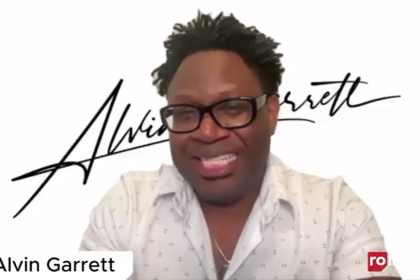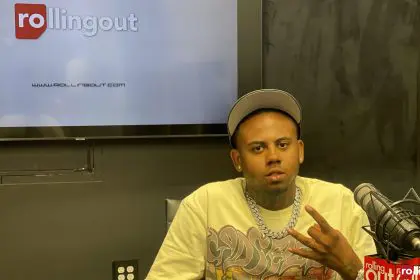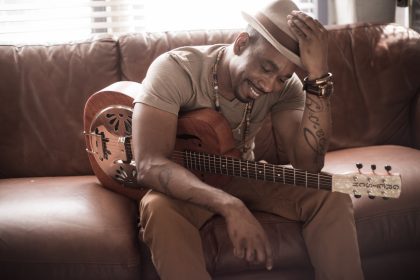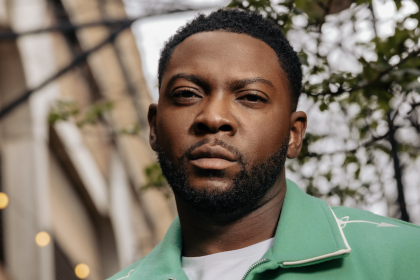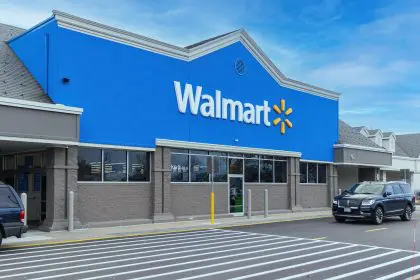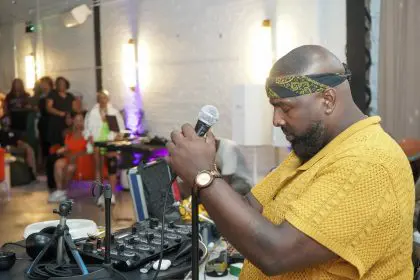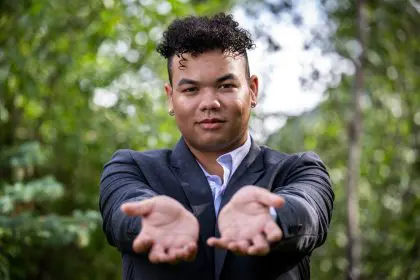
Donavan Glover is one of the most talented directors from Detroit. He tells stories through his videos and keeps culture at the forefront of his work. His latest visual, “Return of the Ghetto Fly,” by Detroit’s resident godfather Amp Fiddler is thick with Detroit swagger and substance. He considers himself astute to the creative process, which is a trait each person who worked on this particular set possesses.
What was it like growing up in Detroit?
I grew up in the downtown area around townhouses and stuff, and the apartments I stayed in, King Homes, were considered the projects at the time. In the 1990s, things weren’t as bad. It was a community. Of course, there were fights and stuff like that, but kids played football. We formed a football league with like four teams and met in the middle of the complex to play games. The thing is, we were downtown, and our complex was considered the only “bad” projects in the area. We were surrounded by middle-class families, so it was different than, say, growing up on 7 Mile. If something went down in the area, it was coming from the King Homes, even though everyone knew each other. I went to neighborhood schools but crossing to the other side of Gratiot was another world. My mom was nervous about me crossing Gratiot because the people were a little rougher on that side.
You definitely learn street smarts living in Detroit, whether good or bad. It builds your awareness. That’s one thing that I do value. We really take pride in where we’re from, whether it’s the “English D” hat, or the Cartier glasses.
Tell me about your first directorial experience.
Between 2009-10, I shot and directed a few music videos for my rap friends. After dropping out of Eastern Michigan University, I had a chance to direct a music video for established artist Elzhi’s “Blue Widow” in 2012. It was a great learning experience. I was introduced to shot-lists and how to create them. When I’d work with friends, I was used to run-and-gunning things. I didn’t know much about business etiquette before then, which is one of the most crucial elements to this industry. Jae Barber (Elzhi’s manager) once called me out when I left the subject bar empty and I didn’t hit “reply all” in the emails. It was much needed, because his feedback helped me step my game up professionally.
The video came out better than I expected. It was my first time having a director of photography on set, and actually watching the playback from the monitor. Once it dropped, it was on numerous publications, like XXL, The Source, and Complex Media. It was dope seeing my name being credited on the blogs and seeing fans sharing and commenting on it. The video also opened up the opportunity for me to direct a project for Karriem Riggins for Stones Throw Records shortly after.

“The Return of The Ghetto Fly” features numerous Black-owned businesses in Detroit (Detroit Roller Wheels, Rex’s Fish King, Bronco Lanes, Pam’s Beauty & Barber Salon). In a city that’s experiencing immense change, how important was it for you to include these historic businesses in the video?
When I first listened to the song, it sounded just like 7 Mile, so the video had to represent the inner-city. Amp grew up on 7 Mile, and has been living here for years, so it was only right that we did it this way. Staying away from Downtown Detroit was intentional because it’s a concept that’s been overdone in the past. Most of my work has revolved around the Downtown area, because that’s where I primarily grew up, and I wanted to take the [road less traveled] approach for this project. Bowling and skating are crucial rites of passage to a lot of young people growing up in Detroit, which I showcased in the video. Overall, myself, along with everyone in the video, wanted to patronize the businesses that have been serving as the backbone of Detroit for decades.
Amp Fiddler is a godfather in the fabric of Detroit music. His teachings were bestowed upon the late J Dilla, and Slum Village (T3 from Slum Village is in the video) and he’s influenced multiple generations of creatives. What was it like working with Amp Fiddler?
It was a smooth process. I felt like we were on the same page when it came to the video concept. We felt like the song was made for Black people, so we wanted to celebrate Black culture in the video. Amp helped coordinate the fashion aesthetics in the bowling scene. I felt like his attire was one of the most important elements within the video. It was real funky and nothing was forced. He trusted the vision I had and he added the right touch.
“Return of the Ghetto Fly” is a pure embodiment of Detroit. Do you consider this video as a career defining moment for you?
Yes, and for a few reasons. This was the first music video I directed with an actual crew, outside of the DP (Jeremy Brockman, who’s been one of my go-to’s for other projects.) It’s also the first video I’ve had to bring on a professional colorist for, and a gaffer. So, with that, this was one of my most professional pieces of work. It was more than just me and Jeremy. It was a team effort with this one.
You can really see my progression as an artist when looking at some of my earlier works. Between “Return of the Ghetto Fly” and “Pirates” [Nick Varsity, 2017], my professional style is evident with visual placement of typography, specific font colors, and more of a cinematic flow. This isn’t to say my earlier work wasn’t good, but my recent projects have more of a vibrant color palette and specific art directions to them.
See the video below.


